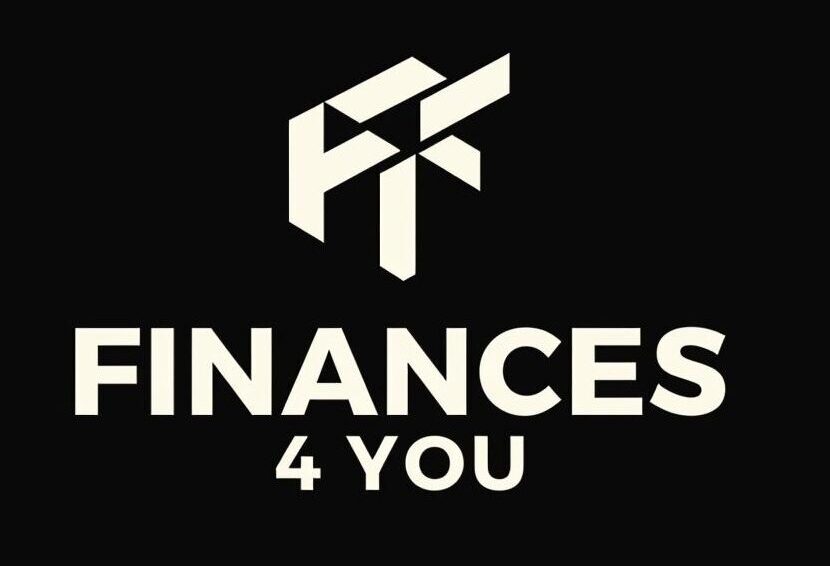Maximize Your Impact: The Power of Smart Giving
Tax-efficient charitable giving allows you to support causes you care about while reducing your tax burden. For high-earning professionals, strategic giving can significantly increase your charitable impact.
Quick Guide to Tax-Efficient Giving:
| Strategy | Tax Benefit | Income Limit |
|---|---|---|
| Donate appreciated assets | Avoid capital gains + full deduction | 30% of AGI |
| Donor-advised funds | Immediate deduction, flexible granting | 60% cash/30% securities |
| Qualified Charitable Distributions | Excludes from income, counts toward RMD | $105,000 annually (2024) |
| Bunch donations | Exceed standard deduction threshold | 5-year carryforward |
| Charitable trusts | Income stream + partial deduction | Varies by trust type |
Every day, U.S. families and individuals give more than $1 billion to charity. But not all giving methods are created equal. When you donate strategically, you can increase your impact by 20-40% through tax savings alone.
For example, donating $50,000 of appreciated stock directly to charity instead of selling it first could save you over $8,000 in taxes. That’s money that could fund additional charitable gifts or build your financial security.
Why this matters for you: As a high-earning professional in your 30s, you’re likely in a tax bracket where charitable deductions provide substantial value. By implementing these strategies now, you create habits that can multiply your giving impact throughout your career while building your financial foundation.
The best part? Tax-efficient giving isn’t about gaming the system—these incentives were specifically designed by tax law to encourage philanthropy.

Simple Tax-efficient charitable giving glossary:
– Tax-efficient real estate investing
– tax optimization tips
1. Tax-Efficient Charitable Giving: Donate Appreciated Assets
When it comes to making your generosity go further, donating appreciated assets might be the most powerful tool in your tax-efficient charitable giving toolkit. Instead of writing a check, consider gifting those stocks, mutual funds, or real estate you’ve owned for over a year. The magic happens in two ways:
First, you completely sidestep capital gains tax on all that appreciation. Second, you can deduct the full current market value on your tax return.
“I was honestly shocked at the difference it made,” shares Maria, a Finances 4You client. “By donating stock instead of cash, my $10,000 gift effectively ‘cost’ me about $7,600 after tax savings. The charity got the same $10,000 either way, but I saved enough to make another meaningful donation.”
This strategy can boost your giving power by up to 23.8% – that’s the combined federal capital gains rate (20%) plus the Medicare surtax (3.8%) that high earners might otherwise pay on investment gains.
The IRS allows deductions for appreciated assets up to 30% of your adjusted gross income in any tax year. Don’t worry if your generosity exceeds that limit – you can carry forward excess deductions for up to five years. For valuation guidance on various assets, the IRS Valuation Guide provides clear direction.
Ready to amplify your overall tax strategy? Our guide to Tax Optimization Tips offers complementary approaches to keep more of what you earn while supporting causes you care about.
Picking the Right Lots for Maximum Benefit
Not all shares in your portfolio offer equal charitable potential. If you’ve purchased the same stock at different times (creating different “lots”), choosing wisely can significantly increase your tax savings.
The smartest approach? Donate shares with the lowest cost basis (meaning they’ve gained the most value) and those you’ve held for longer than one year. This simple selection process maximizes both your deduction and your capital gains tax avoidance.
Here’s a real-world example: Imagine you own 100 shares of a tech company you bought at $50 per share three years ago, and another 100 shares you purchased last year at $80. With the stock now at $100, donating the older, $50-basis shares creates a much larger tax benefit.
Most modern brokerage platforms let you specify which lots to donate. If yours doesn’t offer this feature, be sure to document your intentions clearly when initiating the transfer.
Documentation & Appraisals for Non-Public Assets
While donating publicly traded securities is relatively straightforward, giving non-public assets requires a bit more paperwork – but the tax benefits often make it worthwhile.
For donations of private company shares, real estate, or valuable collectibles worth over $5,000, you’ll need:
- A qualified appraisal from an independent expert (completed no earlier than 60 days before donation and no later than your tax return due date)
- A properly completed IRS Form 8283 attached to your tax return
- For gifts exceeding $500,000, a copy of the appraisal must be included with your tax filing
“The extra documentation is absolutely worth it,” explains tax advisor James Wilson. “I’ve seen clients donate interests in family businesses or investment properties they’ve held for decades, avoiding enormous capital gains while supporting meaningful causes.”
Given these specific requirements, we strongly recommend working with a knowledgeable tax professional when donating significant non-public assets. The combination of proper documentation and strategic selection can transform your charitable impact while providing substantial tax relief.
2. Combine Tax-Loss Harvesting with Charitable Gifts
Let’s face it—market ups and downs are inevitable. But savvy investors know that volatility isn’t just something to endure—it’s actually an opportunity for tax-efficient charitable giving when you combine tax-loss harvesting with your charitable intentions.
This powerful pairing works like this: You sell investments that have dropped in value to capture those losses, which offset capital gains (and up to $3,000 of ordinary income). Then, instead of just making cash donations, you strategically give appreciated securities while using the proceeds from your sold investments to maintain your portfolio balance.
Think of it as a financial two-step that benefits both your bottom line and your favorite causes.
Take Amelia’s situation, for example. She has a $10,000 loss in Fund A and a $15,000 gain in Stock B. Rather than just donating cash, she:
- Sells Fund A, capturing that $10,000 loss
- Donates $10,000 cash to her favorite charity
- Also donates $10,000 worth of Stock B directly to another charity she supports
The magic? She completely offsets her remaining $5,000 capital gain with her harvested loss and receives a hefty $20,000 charitable deduction. That’s smart giving!
Just watch out for the wash-sale rule—the IRS won’t let you claim a loss if you buy the same or “substantially identical” security within 30 days before or after the sale. Think of it as the IRS saying, “No takesy-backsies” on your tax losses.
For more ways to align your money moves with your bigger life goals, our guide on Achieving Financial Objectives is packed with practical insights.
Replenish Portfolio After the Gift
Once you’ve donated those appreciated stocks or funds, you’ll have some portfolio rebalancing to do. This isn’t just housekeeping—it’s another opportunity for tax efficiency.
The beauty of this approach is that you can use the cash you would have donated (but instead used for tax-loss harvesting) to buy similar—but not identical—securities to those you donated. This essentially gives your portfolio a fresh start with higher-basis investments.
“This strategy refreshes your portfolio with higher-basis investments,” explains portfolio manager Sarah Williams. “It’s like getting a clean slate that can significantly reduce embedded capital gains in your portfolio over time.”
Think of it as Marie Kondo-ing your investments—keeping what brings you joy (and returns) while thanking and releasing the positions that no longer serve your financial goals. The result is a portfolio that’s not just aligned with your investment strategy but positioned for future tax-efficient charitable giving opportunities as well.
Year-End Deadlines to Remember
The clock is always ticking when it comes to tax strategies, and year-end can sneak up faster than holiday shopping deadlines. Mark these critical dates on your calendar:
For securities donations, don’t wait until December 31! Transfers typically need 3-5 business days to complete, so aim for mid-December at the latest.
Mutual fund donations are even more time-sensitive, often requiring 2-3 weeks for processing. Early December should be your target here.
Tax-loss harvesting should be completed with enough time for settlement before year-end—late December is your last call.
If you’re using a donor-advised fund, check their specific deadlines. Many have cut-offs well before December 31 for certain asset types.
And don’t forget about documentation—the IRS requires acknowledgment letters for all donations over $250, so make sure you’ll receive these in time.
At Finances 4You, we’ve seen too many well-intentioned donors miss out on tax benefits because of missed deadlines. Our rule of thumb? Aim to complete all year-end giving strategies by mid-December. That way, you can spend the holidays enjoying family rather than frantically calling your broker or fund company.
3. Leverage Donor-Advised Funds (DAFs)
If you’re looking for the Swiss Army knife of charitable giving tools, donor-advised funds (DAFs) might just be your answer. These versatile accounts have become the fastest-growing charitable vehicle in America – and for good reason!
Think of a DAF as your personal charitable savings account. You contribute now, get the tax break immediately, and recommend grants to your favorite charities whenever you’re ready. It’s like having your cake and eating it too.
“Donor-advised funds are like a charitable savings account,” explains philanthropic advisor Rebecca Torres. “They allow you to separate the tax decision from the giving decision, which can be incredibly strategic.”
Here’s why DAFs have become the darling of tax-efficient charitable giving:
Immediate tax deduction – You get the full tax break the moment you contribute, even if you haven’t decided which charities to support yet. Perfect for those December 31st scrambles!
Tax-free growth – Your charitable dollars grow tax-free while in the DAF, potentially creating even more money for your favorite causes. Who doesn’t love free money for charity?
Hassle-free record keeping – One receipt covers everything. No more hunting down acknowledgment letters from a dozen different organizations at tax time.
Give on your timeline – Recommend grants whenever it makes sense for you and the causes you care about. There’s no rush or pressure.
Setting up a DAF is surprisingly simple. Most major financial institutions offer them with initial minimums as low as $5,000. The annual fees typically range from 0.6% to 1% of assets, plus investment expenses – a small price to pay for the convenience and tax benefits.
Business owners will find DAFs particularly valuable as part of a comprehensive financial strategy. For more insights, check out our guide on How to Structure Your Business for Long-Term Financial Success.
Funding a DAF with Complex Assets
One of the most powerful features of DAFs is their ability to digest almost any financial asset – not just cash and publicly traded stocks. This is where they really shine compared to direct giving to charities.
Private company stock can be donated before a sale or IPO, potentially avoiding significant capital gains while supporting causes you love. Many business owners find this particularly valuable during exit planning.
Cryptocurrency donations through a DAF let you convert those highly appreciated digital assets into charitable dollars without triggering the hefty capital gains tax that would come with selling first.
Real estate, restricted stock, and even private equity interests can often find a home in your DAF, though the specific rules vary by provider.
I recently worked with a tech entrepreneur named David who donated pre-IPO shares to his DAF. When the company went public six months later, the value had jumped 40% – all growing tax-free in the DAF. David avoided the capital gains tax he would have faced if he’d sold first, and the charities he supported received significantly more funding.
“The ability to donate complex assets is a game-changer for business owners and investors,” notes financial planner James Rodriguez. “Many charities aren’t equipped to accept these assets directly, but DAFs have the expertise to liquidate them efficiently.”
Crafting a Multi-Year Giving Plan
A DAF isn’t just a tax tool – it’s a planning tool that can transform your approach to philanthropy:
Front-load contributions in high-income years to maximize the value of your deductions. This strategy works beautifully when you’re expecting a bonus, selling a business, or exercising stock options.
Create consistency in your giving even when your income fluctuates. Your favorite causes can count on your support regardless of what’s happening in your financial life that year.
Build a family giving tradition by involving your children or grandchildren in grant recommendations. Many DAF providers allow you to name successor advisors, making it an excellent tool for teaching the next generation about generosity.
Consider Olivia’s approach to tax-efficient charitable giving: She typically donates $10,000 annually to various charities. After receiving a large bonus, she contributed $50,000 to a DAF, taking the full deduction that year when she was in the highest tax bracket. Now she recommends $10,000 grants each year, maintaining her giving pattern while having maximized her tax benefit.
At Finances 4You, we’ve helped dozens of clients develop personalized giving plans that align both their hearts and their tax situations. The beauty of a DAF is that it grows with you through different life stages, adapting to your changing financial circumstances while supporting the causes that matter most to you.
4. Use Qualified Charitable Distributions (QCDs) from IRAs
Birthday when you turned 70½? Probably not the most celebrated half-birthday, but it marks an important milestone for charitable giving. At this age, you gain access to one of the most powerful tools in tax-efficient charitable giving: Qualified Charitable Distributions (QCDs).

QCDs let you transfer money directly from your IRA to qualified charities without counting as taxable income. It’s like the IRS created a secret passage for your retirement funds to reach charities without triggering tax consequences.
“QCDs are the most tax-efficient way for eligible individuals to give to charity,” says retirement specialist Jennifer Garcia. “You’re essentially giving pre-tax dollars that would otherwise be taxed as ordinary income.”
The benefits are substantial:
First, these distributions don’t show up in your adjusted gross income (AGI). This keeps your income lower on paper, which can help with everything from tax brackets to certain deductions that phase out with higher income.
Second, QCDs count toward your required minimum distributions (RMDs). If you’re over 73, you know the IRS requires you to withdraw a certain amount from your traditional IRAs each year. A QCD satisfies this requirement without increasing your taxable income.
Third, you don’t need to itemize deductions to benefit. Even if you take the standard deduction (as most retirees do since the 2017 tax law changes), you still get the full advantage of a QCD.
Finally, by keeping your AGI lower, you might reduce those pesky income-related adjustments to Medicare Part B and D premiums. Those surcharges can add up!
For 2024, you can distribute up to $105,000 annually through QCDs (this amount is indexed for inflation). For married couples, each spouse with their own IRA can use this limit, potentially directing $210,000 to charity annually.
Let’s look at how this works in real life. Robert, who’s 75, has a $50,000 RMD this year. Instead of taking it all as taxable income, he directs $30,000 directly to his favorite charities as QCDs. Only the remaining $20,000 counts as taxable income. At his 24% tax bracket, he saves $7,200 in federal taxes alone!
For more strategies that blend retirement planning with philanthropy, check out our Comprehensive Retirement Planning guide.
Coordinating QCDs with Roth Conversions
Here’s where things get really interesting. QCDs can work beautifully alongside Roth IRA conversions to manage your tax situation.
Think of your tax bracket as a container with limited space. By using QCDs to satisfy your RMD requirements without adding to your taxable income, you create “room” in that container. You can then fill that space by converting some traditional IRA money to a Roth IRA.
Maria, age 72, shows us how this works. She has an $80,000 RMD this year. By making a $50,000 QCD and taking only $30,000 as a taxable distribution, she creates space in her current tax bracket. She then converts $50,000 from her traditional IRA to a Roth IRA, keeping her in the same tax bracket while setting up tax-free growth for the future.
“This strategy works particularly well for those who want to reduce future RMDs while supporting charitable causes,” explains tax advisor Thomas Lee. “It’s a win-win approach that benefits both your retirement planning and your philanthropy.”
You can learn more about QCDs in this brief video that explains the process step by step.
Steps to Execute a QCD Correctly
Like most tax strategies, the devil is in the details. To make sure your QCD provides all those wonderful tax benefits, follow these steps carefully:
Direct transfer is mandatory. The funds must go directly from your IRA custodian to the charity. If you withdraw the money first and then donate it, you’ve just created a taxable distribution and a separate charitable deduction (which you might not even be able to use if you take the standard deduction).
Choose eligible charities carefully. QCDs can only go to qualified 501(c)(3) organizations. Unfortunately, donor-advised funds, private foundations, and supporting organizations don’t qualify. Most religious organizations, educational institutions, and public charities are eligible.
Get proper documentation. Obtain acknowledgment from each charity receiving your QCD, just as you would for any significant donation.
Report it correctly on your tax return. Your IRA custodian will report the distribution on Form 1099-R as a normal distribution. It’s up to you (and your tax preparer) to report it properly as a QCD on your tax return.
“The biggest mistake people make with QCDs is not following the direct transfer requirement,” warns retirement planner Michael Johnson. “If you withdraw the money first and then write a check to charity, you lose the QCD tax benefit.”
At Finances 4You, we’ve helped countless clients coordinate with their IRA custodians to ensure their QCDs are processed correctly. When done right, this strategy becomes a cornerstone of tax-efficient charitable giving for anyone over 70½ with IRA assets.
5. Bunch Contributions for Bigger Deductions
Ever since the 2017 Tax Cuts and Jobs Act nearly doubled the standard deduction, many generous folks have found themselves in a frustrating position – their charitable gifts no longer provide tax benefits. This is where the “bunching” strategy shines as a clever approach to tax-efficient charitable giving.
Bunching is beautifully simple – instead of giving the same amount every year, you concentrate 2-3 years of planned donations into a single tax year. This allows you to itemize deductions in your “generous” years when your total deductions exceed the standard threshold, then take the standard deduction in the “off” years. The best part? Your favorite charities can still receive steady support if you pair this with a donor-advised fund.
Let me share a real-world example: Consider a married couple who typically donates $15,000 annually and has other itemized deductions totaling $10,000. With the 2024 standard deduction at $29,200, their annual $15,000 gift doesn’t provide any additional tax benefit since their total itemized deductions ($25,000) fall below the standard amount.
But watch what happens when they bunch three years of donations ($45,000) into one year: they can itemize $55,000 in deductions that year ($45,000 + $10,000) and take the standard deduction in the following two years. It’s like finding free money!

Over five years, this strategy turns $146,000 in total deductions (standard deduction of $29,200 × 5 years) into $173,600 in deductions ($55,000 + $29,200 × 4 years) – creating an additional $27,600 in deductions! At a 24% tax rate, that’s over $6,600 in tax savings without changing how much they give – just when they give it.
“Bunching is like finding hidden treasure in the tax code,” says financial planner Rachel Kim. “Most people don’t realize they can support the same causes they love while keeping more money in their pocket.”
For business owners looking to integrate personal and business financial strategies, our Wealth Management for Business Owners guide offers valuable complementary insights.
Decision Calculator & Tools
Wondering if bunching makes sense for your situation? You’ll want to consider four key factors: your typical annual charitable giving, other itemized deductions you claim (like state and local taxes and mortgage interest), your applicable standard deduction based on filing status, and your marginal tax rate.
Many online calculators can help you visualize different bunching scenarios, but nothing beats personalized advice. At Finances 4You, we provide clients with custom analyses showing potential tax savings from various bunching approaches custom to their specific situation.
When tax time arrives, you’ll report your bunched charitable contributions on Schedule A of Form 1040. Just be sure to keep detailed records of all donations, including acknowledgment letters from charities or your donor-advised fund. This documentation is your protection in case of an audit and makes tax preparation much smoother.
Avoiding Deduction-Limit Pitfalls
While bunching can work wonders for your tax situation, it’s important to steer around these potential limitations:
Cash donations are generally deductible up to 60% of your adjusted gross income (AGI), while appreciated securities donations have a lower limit of 30% of AGI. The good news? Any excess contributions don’t disappear – they can be carried forward for up to five years.
“The carryforward provision is like a safety net for generous donors,” explains tax attorney Lisa Martinez. “Even if your bunched donation exceeds your AGI limits this year, those excess deductions aren’t lost – they’re just postponed.”
For example, if your AGI is $200,000 and you bunch $150,000 in cash donations, you can deduct $120,000 (60% of AGI) this year and carry forward the remaining $30,000 to future tax years. This flexibility makes bunching powerful even for very generous donors.
If you’re planning a substantial bunched contribution, consider strategically mixing cash and securities donations to maximize your current-year deduction while staying within those AGI limits. This thoughtful approach to tax-efficient charitable giving ensures you get the most bang for your charitable buck while supporting the causes you care about most.
6. Integrate Giving with Major Financial Events
Life is full of financial milestones that can create both opportunities and tax challenges. Whether you’re selling a business, rebalancing your investment portfolio, or receiving a windfall, these moments offer perfect opportunities to practice tax-efficient charitable giving.

Think of charitable giving during major financial events as a win-win strategy. You support causes you care about while potentially reducing your tax burden during times when it matters most.
“I tell my clients that integrating giving with financial milestones is like finding money that would otherwise disappear to taxes,” says Jonathan Taylor, a wealth advisor we work with regularly. “You’re essentially redirecting those dollars from the IRS to causes that align with your values.”
Consider Sophia’s story. When selling her tech company last year, she donated 10% of her shares to a donor-advised fund before the sale closed. This simple move reduced her taxable gain by over $2 million and created a charitable reservoir she’ll use for the next decade. Smart move, Sophia!
Here are some prime opportunities to integrate tax-efficient charitable giving:
Business sales create substantial one-time income that charitable donations can help offset. Consider donating a portion of your business before the sale or contributing some proceeds afterward.
Portfolio rebalancing often triggers capital gains. Instead of selling those appreciated securities, donate them directly to charity and use cash to buy replacement assets – maintaining your allocation while avoiding the tax hit.
Roth conversions generate taxable income that charitable deductions can help balance. This approach can keep you in a lower tax bracket while accomplishing two financial goals simultaneously.
Inheritance windfalls, especially of appreciated assets, present perfect giving opportunities. Donating inherited stocks or property can help you avoid capital gains taxes entirely.
Year-end bonuses pair naturally with charitable giving. Timing large donations to coincide with bonus season can help reduce your overall tax liability.
For more comprehensive strategies on minimizing your tax burden, our Tax Optimization Tips guide offers additional insights custom to various financial situations.
Charitable Trusts for Legacy & Income
When your giving goals are substantial or your financial situation is complex, charitable trusts offer sophisticated tax-efficient charitable giving solutions that benefit both you and your chosen charities.
Charitable Remainder Trusts (CRTs) provide a beautiful balance of generosity and personal financial security. Here’s how they work: you donate assets to an irrevocable trust, receive income for life or up to 20 years, claim a partial tax deduction when funding the trust, and ultimately provide the remainder to your chosen charity.
Charitable Lead Trusts (CLTs) flip this arrangement – the charity receives income for a specific period, after which your heirs receive the remaining assets. This approach can provide an immediate income tax deduction while potentially reducing gift and estate taxes on assets passing to your family.
Samantha Lee, an estate planning attorney we frequently collaborate with, notes that “charitable trusts are particularly valuable in today’s higher-interest-rate environment. The current conditions make charitable remainder annuity trusts more attractive than they’ve been in years.”
Consider how this worked for Michael, a 65-year-old client who funded a $1 million charitable remainder annuity trust. He now receives annual payments of $50,000 for life, claimed a significant upfront tax deduction, and will ultimately support his favorite environmental organization with the remainder. This arrangement provides both income security and philanthropic impact.
Naming Charities as Beneficiaries
Sometimes the simplest approaches to tax-efficient charitable giving can be the most powerful. Naming charities as beneficiaries of your accounts requires minimal paperwork but can create substantial impact.
Your retirement accounts (IRA, 401(k), 403(b)) make particularly tax-efficient charitable gifts. Why? Because charities receive the full value tax-free, while individual beneficiaries would pay income tax on these distributions. This difference can be substantial – sometimes 30% or more of the account value.
Life insurance policies with charitable beneficiaries provide a leveraged gift that doesn’t affect your current cash flow. This approach works especially well for policies you no longer need for family protection.
Bank or investment accounts can easily support charities through payable-on-death (POD) or transfer-on-death (TOD) designations, keeping these assets outside of probate.
Your will or revocable trust can specify charitable bequests as part of your broader estate plan, creating a lasting legacy.
“Naming a charity as the beneficiary of retirement assets is incredibly tax-efficient,” explains David Wilson, an estate planner we work with. “Think about it this way: a $500,000 IRA left to your children might only provide them $350,000 after income taxes. But that same IRA left to charity delivers the full $500,000 to your cause, and you can direct other, more tax-efficient assets to your children.”
At Finances 4You, we help clients structure their estate plans to maximize both family support and charitable impact. We find that thoughtful beneficiary designations often create the most neat solutions – supporting your loved ones while making a meaningful difference for the causes closest to your heart.
Frequently Asked Questions about Tax-Efficient Charitable Giving
What are the current deduction limits and carryforward rules?
When you’re planning your giving strategy, knowing how much you can actually deduct is crucial. The IRS has specific limits that depend on what you’re giving and who’s receiving it:
For public charities (like most well-known nonprofits), you can deduct up to 60% of your adjusted gross income for cash donations. If you’re donating those appreciated stocks we’ve been talking about, the limit drops to 30% of your AGI.
Private foundations have stricter limits – cash donations are capped at 30% of AGI, while appreciated securities max out at just 20% of AGI.
“Understanding these limits is crucial for maximizing the tax benefit of significant gifts,” advises tax specialist Michelle Park. “The five-year carryforward provides flexibility, but it’s still important to plan large donations with these thresholds in mind.”
The good news? If your generous heart leads you to donate more than these limits allow in a single year, the IRS doesn’t leave you hanging. You can carry forward the excess for up to five tax years. This feature is particularly valuable when you’re using the bunching strategy or making a substantial one-time gift to support a cause you’re passionate about.
Can I donate cryptocurrency or private business interests?
Absolutely! Both cryptocurrency and private business interests can be powerful assets for tax-efficient charitable giving – though they do require a bit more attention to detail.
For cryptocurrency donations:
– You’ll need a qualified appraisal for donations exceeding $5,000
– Direct transfer to the charity is essential – selling first triggers those capital gains taxes you’re trying to avoid
– Make sure your chosen charity can actually accept and liquidate crypto assets (not all can)
When it comes to private business interests (like your stake in an S-corp, C-corp, LLC, or partnership):
– Timing is everything, especially if you’re considering a donation before a sale or liquidity event
– You’ll need a qualified independent appraiser to determine the value
– Pay special attention to holding period requirements and unrelated business taxable income (UBTI) rules
“Donating private business interests before a sale can be one of the most powerful tax-saving strategies available,” notes business exit planner Jason Rodriguez. “We’ve seen clients save millions in taxes while significantly increasing their charitable impact.”
I’ve watched clients transform a potential tax bill into meaningful support for causes they care deeply about – all while potentially setting themselves up for a more secure financial future.
Do I need to itemize to benefit from charitable gifts?
For most charitable giving strategies, yes – you’ll need to itemize deductions on Schedule A of your tax return to see those tax benefits. But there are two notable exceptions worth knowing about:
First, if you’re 70½ or older, Qualified Charitable Distributions (QCDs) let you transfer money directly from your IRA to charity without itemizing. These distributions don’t count as taxable income – a significant benefit regardless of whether you itemize.
Second, though it’s currently expired, the CARES Act temporarily allowed a limited “above-the-line” charitable deduction for 2020 and 2021, even for those taking the standard deduction. While this specific provision is gone, it’s worth keeping an eye out for similar opportunities in future legislation.
“The standard deduction versus itemizing calculation is the starting point for any tax-efficient charitable giving strategy,” explains financial advisor Maria Chen. “For many donors, bunching contributions or using a donor-advised fund is the key to maximizing tax benefits.”
At Finances 4You, we help clients analyze whether itemizing makes sense based on their overall tax situation and charitable goals. Sometimes, a small adjustment in your giving strategy can open up significant tax savings while maintaining – or even increasing – your support for the causes you care about.
Conclusion
Giving to causes you care about is one of life’s great joys. When you add tax-efficient charitable giving strategies to your philanthropy, that joy multiplies – both for you and the organizations you support.
Throughout this guide, we’ve explored powerful ways to make your charitable dollars go further. These aren’t tax loopholes or tricks – they’re intentional incentives built into our tax code to encourage generosity. By using them wisely, you’re simply directing money that would otherwise go to taxes toward causes that matter to you.
Think about the impact: By implementing these strategies, you could increase your charitable giving by 20% or more without spending an extra penny from your pocket. That’s thousands of additional dollars supporting important work in your community and beyond.
Let’s remember the key approaches we’ve covered:
When you donate appreciated assets instead of cash, you sidestep capital gains tax while still getting the full deduction. Your charity receives the same value, but you save significantly on taxes.
By combining tax-loss harvesting with charitable gifts, you create a double win – offsetting capital gains while supporting your favorite causes.
Donor-advised funds offer remarkable flexibility, allowing you to contribute now for the tax benefit while distributing grants thoughtfully over time.
For those 70½ or older, qualified charitable distributions from IRAs provide a uniquely powerful way to give pre-tax dollars directly to charity.
The bunching strategy helps you overcome the standard deduction hurdle, maximizing tax benefits by concentrating multiple years of giving into a single tax year.
And by integrating giving with major financial events like business sales or portfolio rebalancing, you can transform tax challenges into charitable opportunities.
At Finances 4You, we believe thoughtful philanthropy should be woven into your broader financial plan. While tax benefits matter, they should improve – not drive – your giving decisions. The deepest satisfaction comes from supporting organizations aligned with your values and seeing the difference your generosity makes.
We’re here to help you create a giving strategy that benefits both your favorite causes and your financial well-being. For more insights on building wealth while making an impact, explore our business services resources or reach out for personalized guidance.
By embracing these tax-efficient charitable giving approaches, you’re not just being financially smart – you’re creating a legacy of generosity that can inspire others and change lives for years to come.








1 thought on “Donor-Advised Fun: How to Make Charitable Giving Tax-Efficient”
Pingback: Leave a Legacy, Not a Tax Bill: Smart Estate Planning Tips - Finances 4 You
Comments are closed.